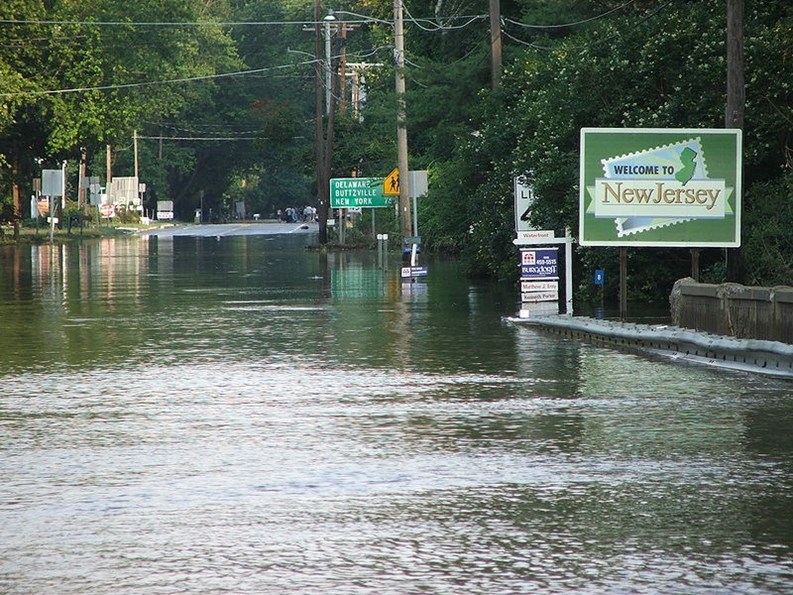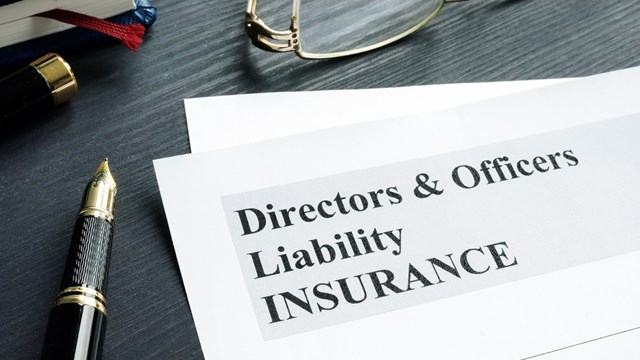Since 2000, New Jersey has experienced five federally declared disasters due to flooding. Hurricane Ivan crashed ashore in July 2004 and quickly became a category five hurricane. New Jersey residents were hit with intense rains, causing millions of dollars in damages to homes and businesses. And the spring floods in April of 2007 covered New Jersey in almost a foot of rain. Extensive flooding destroyed land and property, causing every county in New Jersey to be declared a federal disaster area. And flooding just this past spring continued that pattern of extensive damage to the Garden State.
According to the National Flood Insurance Program (NFIP), flooding in the past five years (2003-2008) cost the state dearly. Insured flood losses in New Jersey totaled approximately $266 million. Since April 2007, flood insurance policies in New Jersey have increased by 4.6 percent to more than 225,000 policies as of April 2008. However, according to NFIP, many New Jersey households remain at risk. There are more than 3 million households in New Jersey (2000 U.S. Census), but just 225,171 insurance policies in effect. Only seven percent of the state’s households are covered.
The Need for Flood Insurance
“I would say it’s a good idea for everyone to have them [flood insurance policies],” says Matt Brady, director of media relations for National Association of Mutual Insurance Companies, which is based in Washington, D.C. Flooding is something that is generally not covered under regular homeowner insurance policies, says Brady, which is why the NFIP was created in the first place in 1968 by an act of Congress.
Flood insurance is available nationwide and everyone’s home and property is vulnerable, says Brady. “I mean we have seen floods in Tennessee to New England, pretty much anywhere in the past year or so. So anyone can buy it. There are people that are generally required to buy it,” he says, referring to provisions by banks and mortgage lenders. “If you have a federal loan, the FHA requires that you get flood insurance to protect the property.”
Flood insurance is underwritten by the federal government, but purchased through write-your-own companies, which are private insurance carriers that get paid a fee from theNFIPto service the policies. Many large insurance companies, such as Hartford and Travelers, have a separate arm that specifically handles such insurance. But even so, you are still insured with the NFIP under the same policy, same rates and same coverage.
For condominium owners, responsibility for making sure there is adequate flood coverage lies with both the association and individual unit owners. Complicating matters for those trying to pay for damage to their property, water damage from a storm does not necessarily qualify as a flood, insurance experts say.Brady concurs. “In a hurricane, there’re a lot of problems, related to difficulties trying to figure out whether a home was destroyed by the initial winds of the hurricane or by the flood waters coming in afterwards. And that is something that an adjuster would sort of go through and work out who was responsible for what.”
Responsibility for coverage lies in what type of structure is involved, according to Brady. “If it’s a multi-unit thing then the association or the co-op or whatever, whoever owns the actual building as collective or whatever you call that—would buy the general flood coverage,” he says. “Individual unit owners could also buy coverage for their contents so they would be protected. So if the building were flooded the actual structure would be protected by the general flood policy owned by the co-op or the association.” Everything else would be the homeowner’s responsibility, he added.
As for average cost, Brady said there are minimums and maximums but the actual premium is based on risk and how exposed the property is to a flood. If the property is in one of the designated flood zones or higher risk areas, then obviously that policy would be more expensive. Events like Hurricanes Katrina and Rita brought the issue to the forefront, so to speak. People who never even thought about needing flood insurance suddenly were wondering if a disaster like that could happen to them, according to Brady.
According to Mike Barry, the vice president of media relations for the Insurance Information Institute, the way the NFIP is set up is that you are covered on dwelling damages up to a maximum of $250,000. And in that same policy you’re covered up to $100,000 if you choose to go that high on personal contents coverage. In higher risk flood zones, Barry says, private sector insurers offer “excess flood insurance” policies that will cover for the dollar amount above and beyond what NFIP will cover. Barry advises the homeowner to check with their condo or HOA insurance agent to check on if flood insurance is required and how much coverage is needed
What is a Flood?
Homeowners would probably be surprised to find that their definition of water damage caused by a flood might not correlate with the actual insurance definition. John O’ Connor, vice president of underwriting for Travelers Insurance, says that basically “coverage is provided for direct damage to covered property caused by or from a flood.” And “flood” is defined, says O’Connor, as a general and temporary condition of partial or complete inundation of two or more acres of normally dry land or two or more properties from the overflow of inland or tidal waters. This usually includes an unusual and rapid accumulation or runoff of surface waters from any source including natural sources, such as excessive rainfall and overflowing rivers and streams, as well as man-made sources that overflow, he says.
There is an inherent risk in not having flood insurance, says O’Connor. Traditional property insurance, for example, would not cover coastal properties that suffer damage from wave wash or storm surges, he adds.
Many parts of New Jersey, especially in the Delaware River Basin are so prone to flooding that they have had serious flood events over the years as the result of snow melt and/or rain runoff from heavy rainstorms. The main stem of the Delaware River stretches roughly 360 miles from its headwaters in New York State to its mouth at the Delaware Bay, and its tributaries extend many hundreds of miles more. Over its course the river and its tributaries run through a variety of landscapes, all which affect the risk to life and property from flood events differently.
Record flooding occurred in August 1955, in the aftermath of the passing of the remnants of two separate hurricanes over the area within less than a week: first Hurricane Connie and then Hurricane Diane, which was, and still is, the wettest tropical cyclone to have hit the northeastern United States. The river gauge at Riegelsville, PA recorded an all time record crest of 38.85 feet (11.84 m) on August 19, 1955. In recent memory, moderate to severe flooding has occurred along the river three times in the past decade. The same gauge at Riegelsville recorded a peak of 30.95 feet (9.43 m) on September 23, 2004, 34.07 feet (10.38 m) on April 4, 2005, and 33.62 feet (10.25 m) on June 28, 2006, all considerably higher than the flood stage of 22 feet (6.7 m). Severe rainstorms in March of this year caused major flooding in some New Jersey communities including Bound Brook, where the Delaware crested at 15.24 feet, 7 feet below flood stage. A task force was set up to make recommendations to mitigate future flood damage throughout the Garden State.
This spring, parts of the state received federal disaster relief resulting from severe rainstorms in March and April and a recent storm caused flash flooding in several counties. This series of spring storms broke records for precipitation in New Jersey. From April 1, 2009, until March 30, 2010, 65 inches of precipitation fell on New Jersyans, washing away the old record of 61.4 inches, which was set from May 1938 through April 1939. No records are available before 1895.
According to David Hilgen, a spokesman for Chubb Insurance, regardless of whether the homeowner lives in a flood zone, it is important to consider purchasing flood insurance. NFIP reports that 25 percent of the claims it pays are for flood damage in homes that are in low-hazard flood zones.
“As with anything, you have to consider your situation and consider what you can do,” says Brady. “The big lesson is that you shouldn’t believe that you are not at risk. That’s the big problem with flood insurance.... It’s one of those things, everyone thinks it won’t happen to them.”
Debra A. Estock is the managing editor of The New Jersey Cooperator. Editorial Assistant David Chiu contributed to this article.







Leave a Comment